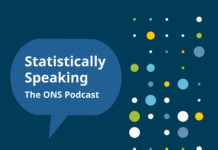
Today the Office for National Statistics (ONS) has published the next phase of Census 2021 outputs for England and Wales where we look at topics including migration, country of birth and household size and structure.
The number of England and Wales residents born outside of the UK has increased by 2.5 million in the decade since the last census.
New data from Census 2021 show most of the increase in residents born outside the UK were arrivals from Romania, after working restrictions were lifted in 2014, followed by India and Poland.
One in six, or 10 million (16.8%), usual residents of England and Wales were born outside the UK on Census Day, 21 March 2021, an increase from 7.5 million (13.4%) in 2011.
The number of people who listed Romania as their country of birth grew by 576% since the previous census (from 80,000 in 2011 to 539,000 in 2021), although India remained the most common country of birth outside the UK in 2021 with more than 900,000 residents.
The countries no longer in the top 10 non-UK countries of birth were the United States and Jamaica.
Those who listed Ireland as their country of birth declined from 407,000 in 2011 to 325,000 in 2021 (a decrease of 83,000, 20.3%). This follows a long-term trend since it peaked in the 1961 Census.
Commenting on today’s numbers, Census Deputy Director Jon Wroth-Smith said: “The census paints a picture of how the make-up of the population has changed in the past decade. That decade, of course, saw us leave the EU as well as live with the pandemic.
“While these events may have had an impact on people’s decisions or ability to migrate or travel at a given time, the census tells us about the change over the whole decade – who was living here in March 2021, compared with March 2011. We can see Romanians have been a big driver in this change, while there have also been increases due to migration from India, Pakistan and Poland, as well as southern European countries such as Italy.
“We can also see that migration in the year prior to census was lower in 2021 than it was in 2011. This is likely, in large part, due to the various travel restrictions in place during the coronavirus pandemic.”
London has remained the region with both the largest proportion of people born outside the UK and the largest proportion of people with non-UK passports. In 2021, more than 4 in 10 (40.6%) usual residents in London were non-UK born, and more than 1 in 5 (23.3%) had a non-UK passport.
In contrast, both Wales (6.9%) and the North East of England (6.8%) had approximately 1 in 14 usual residents born outside the UK. Similarly, Wales (4.0%) and the North East (3.7%) also had the lowest proportions of the population with non-UK passports.
Characteristics of the population
Today’s release also sheds light on the characteristics of people living in England and Wales and shows a similar picture to 2011.
While the number of households increased, in line with the increase in the overall population, the make-up of those households is similar, with 6 in 10 being single family households and 3 in 10 being one person households. The average household size in England and Wales in 2021 was 2.4 people per household, as it had been in 2011.
For the regions in England, the largest households on average were in London (2.5 residents per household) and the smallest households were in the North East (2.2 residents per household).
The local authorities with the highest average household size were Newham, Slough and Redbridge (all 3.0 residents per household) in England, and Cardiff and Newport (both 2.4 residents per household) in Wales.
Those with the lowest average household size were the City of London (1.7 residents per household) and North Norfolk (2.1 residents per household) in England – also home to the highest proportion of those aged 65 years and over – and Conwy (2.2 residents per household) in Wales.
Mr Wroth-Smith added: “When looking a bit deeper, we can see that the proportion of people in a marriage or civil partnership has declined, which follows the long-term trend of declining marriages. Conversely, the number of people who were never married or in a civil partnership has increased by almost 3 million.
“We also know that Wokingham (54.9%), Hart (54.5%) and Hambleton (53.7%) have the highest proportion of married couples, while Hastings (12.6%), Torbay (12.6%) and Blackpool (12.5%) have the highest proportion of divorcees.”
How old is your town?
The median age in England and Wales in 2021 was 40 years (40 years in England, 42 years in Wales); this is higher than the median age of 39 years in England and 41 years in Wales in 2011. But the picture presented today varies between urban and rural areas, and those areas with large student populations.
The region of England with the highest median age was the South West (44 years) and that with the lowest median age was London (35 years).
Across England and Wales, the local authorities with the highest median age were North Norfolk (54 years), Rother (53 years) and East Lindsey (52 years).
The local authority with the lowest median age was Tower Hamlets (30 years), followed by Nottingham, Cambridge, Oxford and Manchester (all 31 years).
More information
- Use our Census maps to find out what people’s lives are like across England and Wales. This interactive tool allows you to explore Census 2021 data for different topics down to a local authority and neighbourhood level. It can help you find out things like which areas have the oldest populations and youngest populations; which neighbourhoods have the highest percentages of people living alone or which areas have the highest and lowest percentages of people married or in civil partnerships. Once you have picked your topic, your chosen map can then be used in your own website by following the “use and share” instructions.
- As 2021 Census data shows median age has continued to rise for the population of England and Wales, we look at why population ageing matters. “Voices of our ageing population: living longer lives” was compiled in partnership with Age UK, the Centre for Ageing Better and the International Longevity Centre UK.
- Today, the ONS has made Demography and Migration univariate data available via our website. The data are provided as downloadable excel spreadsheets in the first instance, with APIs available soon via the NOMIS and ONS websites. To accompany these data, we have a range of explanatory and exploratory products to illustrate the richness of these data.
- The next Census 2021 release is out next week (10 November 2022), looking for the first time at UK armed forces veterans.
Go to our release
Help keep news FREE for our readers
Supporting your local community newspaper/online news outlet is crucial now more than ever. If you believe in independent journalism, then consider making a valuable contribution by making a one-time or monthly donation. We operate in rural areas where providing unbiased news can be challenging. Read More About Supporting The West Wales Chronicle























